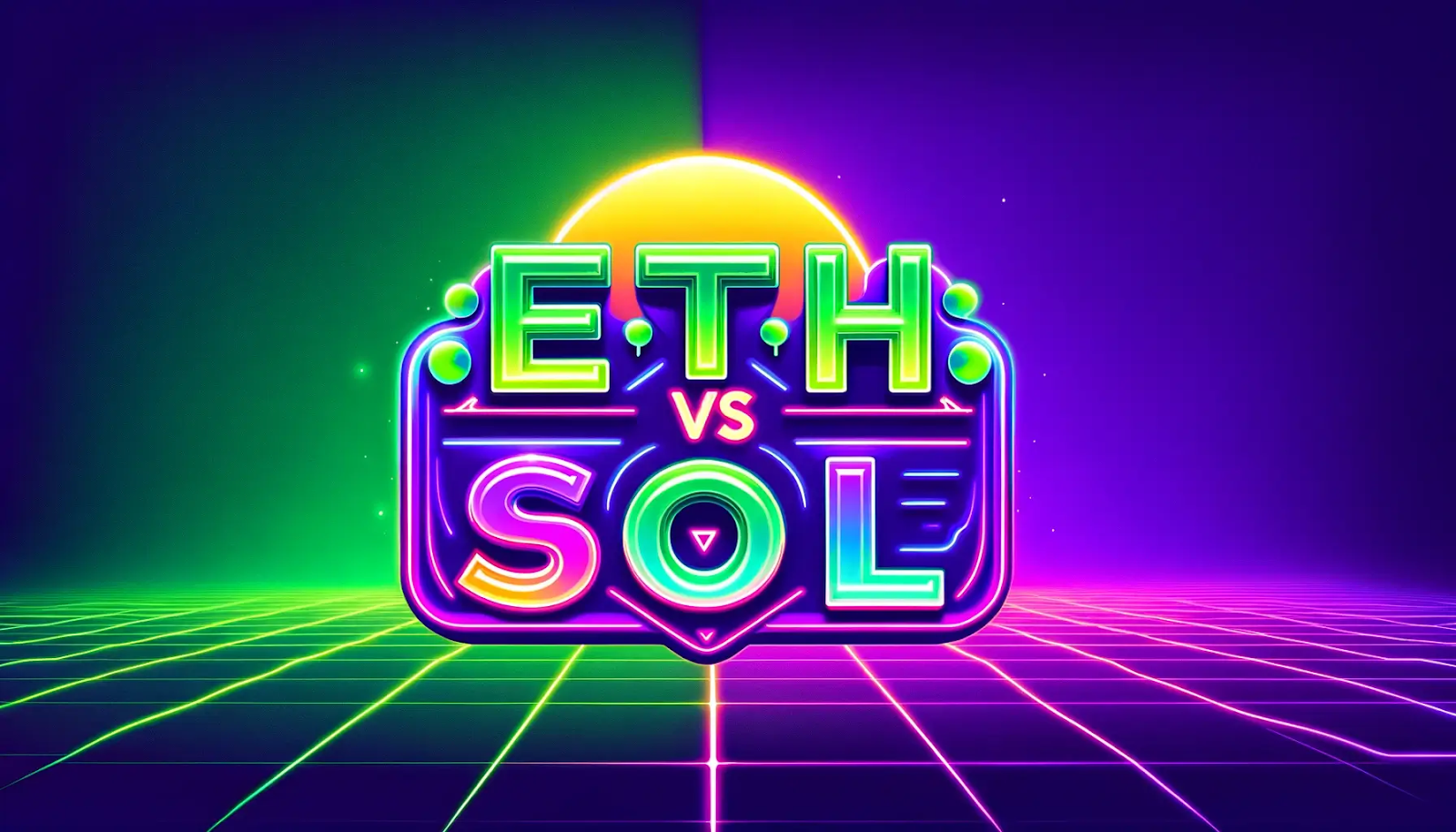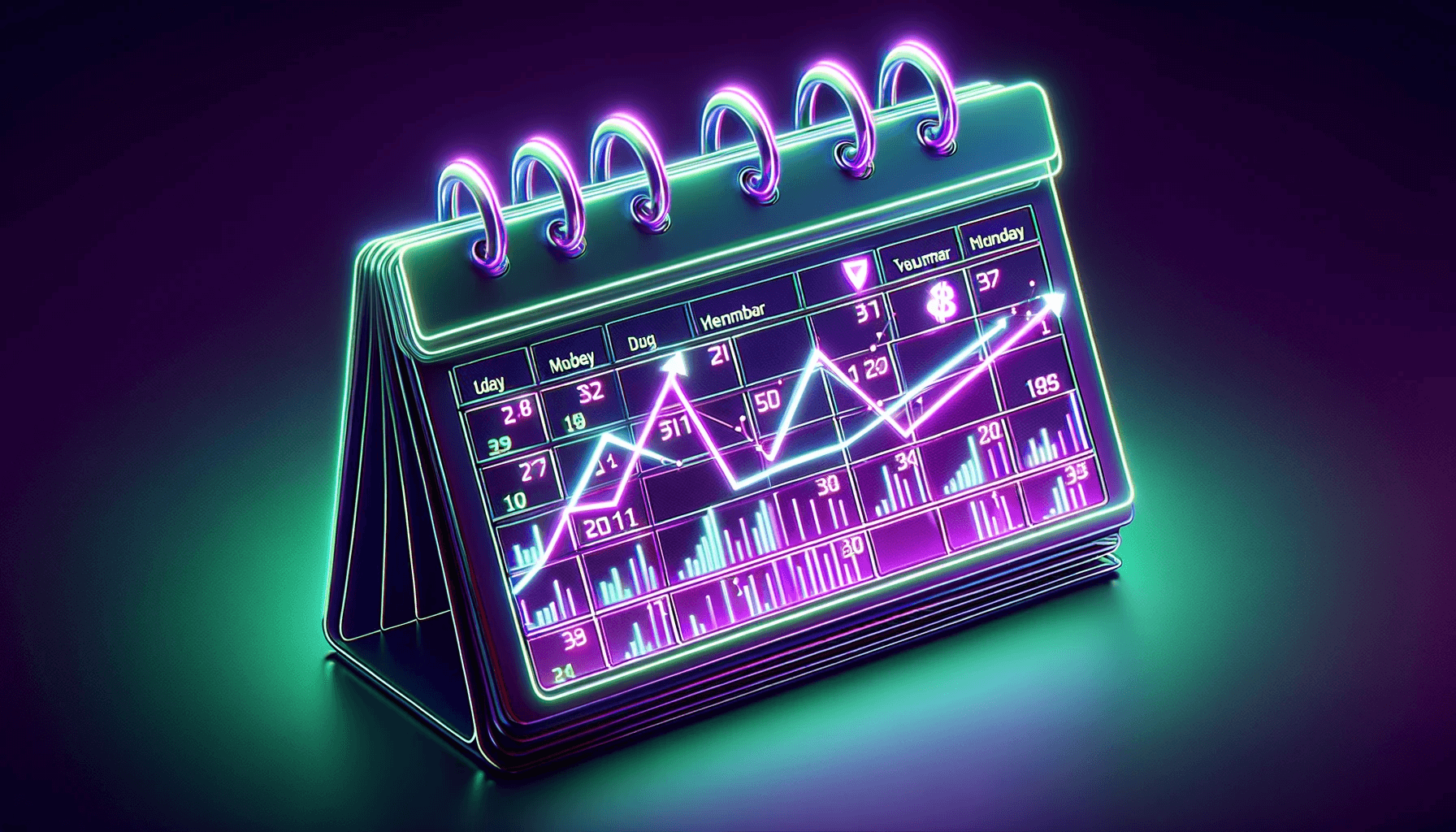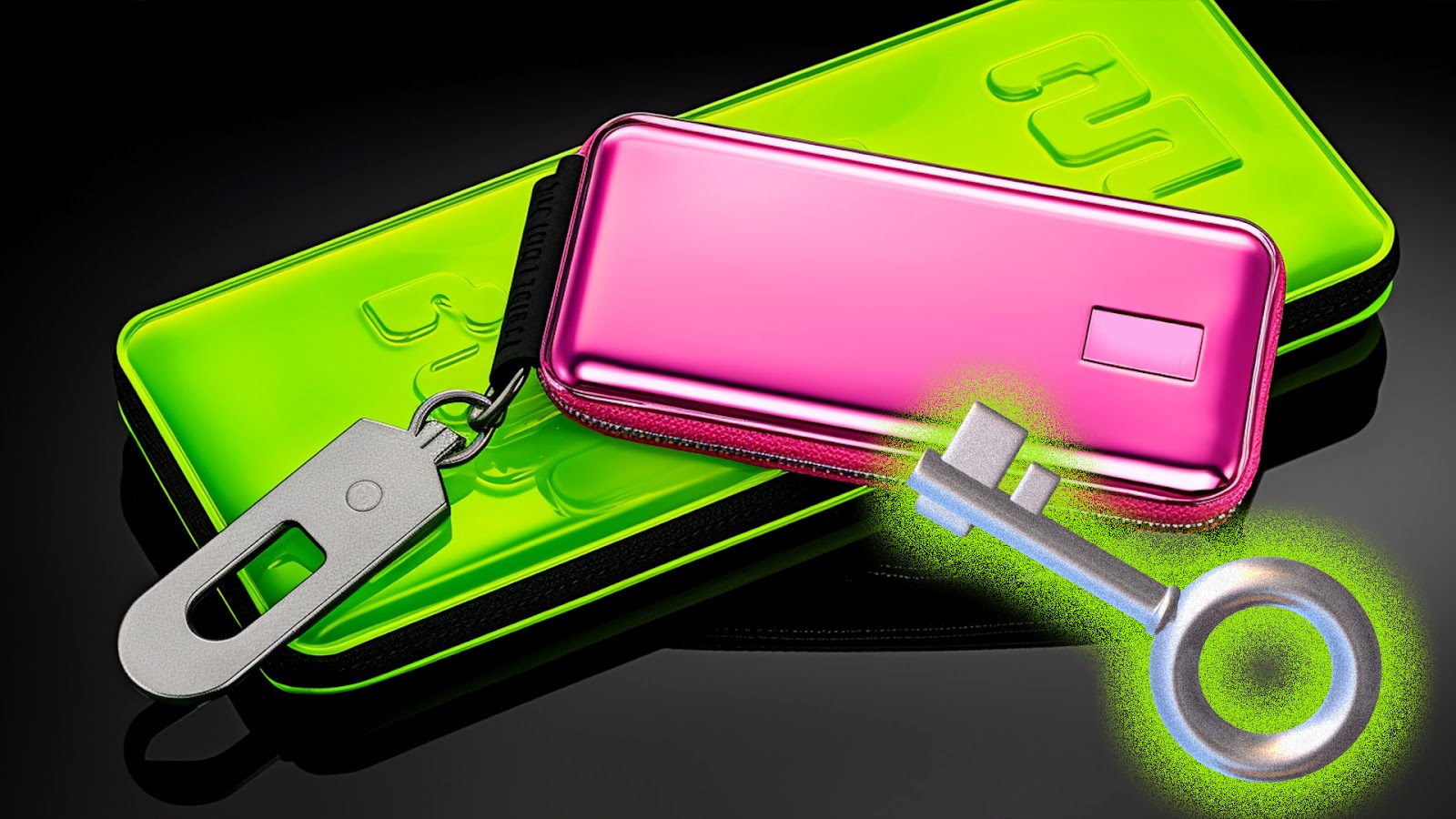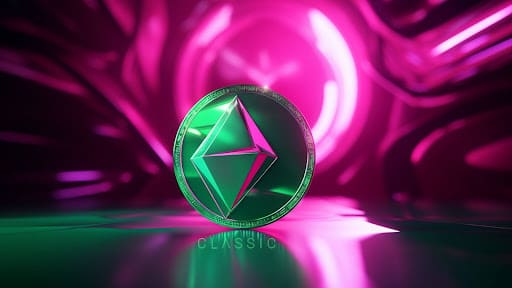
In the rapidly evolving world of blockchain, Ethereum and Solana stand out as two of the most prominent blockchain platforms.
Each brings unique strengths and faces distinct challenges, shaping their roles in the broader blockchain ecosystem.
We will delve into the intricacies of Solana Vs Ethereum, comparing their technologies, use cases, community ecosystems, and potential future developments.
The Foundations: Solana Vs Ethereum Explained
Ethereum
Ethereum, since its inception by Vitalik Buterin and its subsequent launch in 2015, has been a groundbreaking force in the blockchain world.
It expanded the scope of blockchain technology beyond just financial transactions, introducing the world to the concepts of 'smart contracts' and decentralised applications (dApps).
Ethereum was designed as a versatile blockchain platform, enabling not just the transfer of a cryptocurrency (ETH) but also the execution of complex agreements and applications, which is made possible through its pioneering use of smart contracts.
Smart contracts on Ethereum are self-executing contracts with the terms of the agreement directly written into code.
They automatically enforce and execute the terms of a contract when predefined conditions are met, without the need for intermediaries.
Ethereum's support for dApps has led to the development of a diverse ecosystem of decentralised applications offering various services such as decentralised finance (DeFi) and non-fungible tokens (NFTs).
Initially, Ethereum operated on a Proof of Work (PoW) consensus mechanism, similar to Bitcoin, where miners solve complex mathematical problems to validate transactions and create new blocks.
However, Ethereum has since transitioned to Proof of Stake (PoS). This shift aims to address some of the limitations of PoW, particularly scalability and energy efficiency.
Under PoS, validators will stake their ETH to participate in the transaction validation process, making the process more energy-efficient and potentially leading to faster transaction speeds and greater scalability.
Solana
Solana, launched in 2020 by Anatoly Yakovenko, has rapidly emerged as a significant player in the blockchain space.
It aims to address the blockchain trilemma – achieving scalability, security, and decentralisation – through its innovative technology.
Solana's primary aim is to provide a blockchain platform that supports high-speed transactions and is scalable to meet growing demand without compromising on security.
This trilemma refers to the challenge of achieving scalability, security, and decentralisation simultaneously in blockchain technology. Solana's architecture is designed to balance these three key aspects effectively.
Solana introduces the concept of Proof of History as part of its consensus mechanism. PoH is a unique approach that helps create a historical record that proves that an event has occurred at a specific moment in time. This is crucial for improving the efficiency and speed of the consensus process.
Alongside PoH, Solana utilises the Proof of Stake model for its blockchain security and network validation.
One of the notable features of Solana is its high transaction throughput, with the ability to handle thousands of transactions per second. This positions Solana as a potential competitor to blockchains like Ethereum.
The Solana ecosystem has been growing, attracting a wide range of decentralised applications, including DeFi, NFTs, and decentralised exchanges (DEXs).
Its capacity for high throughput and low-cost transactions makes it an appealing platform for developers and users alike.
Solana Vs Ethereum - Consensus Mechanisms: A Technical Comparison
The blockchain landscape is witnessing significant shifts in consensus mechanisms, with Ethereum’s transition from Proof of Work (PoW) to Proof of Stake (PoS) and Solana’s innovative blend of Proof of History (PoH) and PoS.
These developments represent efforts to address the challenges of scalability, speed, and energy efficiency in blockchain networks and shape the debate between Solana Vs Ethereum.
Ethereum’s Shift from PoW to PoS
Ethereum's original consensus mechanism, PoW, mirrors that of Bitcoin. While secure, it has been criticised for its high energy consumption and limited capacity to scale, leading to slower transaction speeds and higher costs.
As a result, the move to PoS is set to address these challenges.
PoS drastically reduces energy consumption by eliminating the need for energy-intensive mining.
Additionally, PoS enhances scalability, potentially increasing transaction throughput and reducing latency. This shift is expected to solve some of the most pressing limitations of the Ethereum network.
Solana’s PoH and PoS Blend
Solana introduces Proof of History as a core component of its consensus mechanism.
PoH creates a historical record of events or transactions, establishing a verifiable order and time for each event.
This method allows for greater efficiency in processing transactions.
PoH essentially acts as a cryptographic time-stamping mechanism, enabling the network to more quickly validate transactions and blocks.
Solana integrates PoH with a PoS consensus mechanism, this hybrid approach allows the network to leverage the speed and efficiency of PoH while maintaining security through PoS.
The result is a highly efficient blockchain network with fast transaction speeds and low costs making Solana one of the fastest and most cost-effective blockchains available.
Solana Vs Ethereum - Ecosystem and Community Development
Ethereum’s Robust Ecosystem
Ethereum's rise as a leading blockchain platform is not just a result of its technological advancements but also due to its large and active community.
This community, coupled with its robust development framework, has made Ethereum the foundation for a multitude of projects spanning various domains.
Ethereum has become the go-to platform for DeFi projects. Its smart contract functionality enables the creation of decentralised exchanges, lending platforms and yield farming programs to name a few.
The NFT boom has largely been propelled by Ethereum, the most popular blockchain for NFTs.
The blockchain supports various NFT projects and marketplaces, allowing creators and collectors to buy, sell, and trade unique digital assets.
The Ethereum community actively contributes to its evolution through Ethereum Improvement Proposals (EIPs). These proposals are a mechanism for discussing and implementing changes to the network, reflecting the community-driven nature of the platform.
Solana’s Growing Community
Solana is rapidly gaining traction among developers. Its growing ecosystem, marked by high performance and lower operational costs, is drawing a diverse range of projects, particularly in the DeFi and NFT sectors.
Solana is becoming a hub for DeFi projects due to its high speed and low transaction costs. It supports various DeFi applications, including DEXs, lending platforms, and yield farming services.
The NFT space on Solana is flourishing, the efficiency and cost-effectiveness of Solana make it an ideal platform for minting and trading NFTs.
Solana provides a great environment for developers, offering resources and tools to facilitate the development process. This includes documentation, development kits, and support from the Solana community.
There are also regular hackathons and community events that help bring together like-minded individuals.
Recently Solana Mobile has sold out, partly due to the free BONK users receive which was initially worth very little and has since skyrocketed to become more valuable than the phone itself.
Unfortunately, this is now sold out.
Solana Vs Ethereum - Comparing Transaction Costs and Speed
Ethereum’s Gas Fees and Latency Issues
Ethereum, as one of the most widely used blockchain platforms, faces certain operational challenges, particularly regarding transaction fees and network congestion.
Ethereum's transaction fees, commonly known as gas fees, are payments made by users to compensate for the computing energy required to process and validate transactions.
Gas fees can increase significantly during periods of high network congestion.
High gas fees can make Ethereum transactions expensive, particularly affecting smaller transactions where fees can outweigh the transaction value.
Currently, Ethereum is capable of processing approximately 15-30 transactions per second (TPS). While this may seem substantial, it is often insufficient to handle peak demand periods, leading to network congestion.
During peak periods, such as during popular ICOs, NFT drops, or significant DeFi activity, the Ethereum network can become particularly congested. This leads to slower transaction processing times and higher gas fees.
To address these challenges, Layer 2 solutions have been developed. Layer 2 is a collective term for solutions designed to help scale applications by handling transactions off the Ethereum main chain (Layer 1) while taking advantage of its robust decentralised security model.
By implementing Layer 2 solutions, Ethereum hopes to significantly increase its transaction throughput, reduce delays, and lower gas fees, ultimately enhancing the overall user experience.
Solana’s Low Fees and High-Speed
Solana has gained significant attention for its operational efficiency, particularly in terms of transaction fees, speed, and throughput.
These attributes are positioning Solana as a competitive player in the blockchain space.
One of the notable advantages of Solana is its ability to maintain minimal transaction fees, even during periods of high network activity. This contrasts sharply with Ethereum, where fees can escalate significantly during peak usage.
Solana boasts incredibly fast block times, with an average of 400 milliseconds.
This speed is among the fastest in the blockchain world and is a key factor in Solana's growing popularity.
Solana has an exceptionally high transaction per second (TPS) capacity, reportedly handling between 50,000 to 65,000 TPS.
The high throughput is largely attributed to Solana’s innovative consensus mechanism, which combines Proof of History (PoH) with Proof of Stake (PoS). This combination allows for efficient transaction processing and validation, contributing to the platform's scalability.
Solana Vs Ethereum - Decentralisation and Network Security
The concept of decentralisation plays a crucial role in blockchain technology, influencing both the security and the governance of a network.
In the Solana Vs Ethereum debate they both approach decentralisation differently, each with its unique challenges and characteristics.
Decentralisation in Ethereum
Ethereum's architecture and philosophy are deeply rooted in decentralisation. The platform's development and governance are driven by a widespread, global community of developers, users, and stakeholders.
This community-driven approach ensures that no single entity has complete control over the network, aligning with the foundational principles of blockchain technology.
Ethereum's security model is robust and has been tested over several years of operation. The network's PoW mechanism (transitioning to PoS) contributes to its security by distributing power among a large number of miners or validators.
Despite its strong security record, Ethereum has faced challenges, including network forks. These forks often arose from disagreements within the community or as responses to security incidents.
Centralisation Concerns in Solana
Solana's architecture, which enables high transaction throughput, requires validators to have significant computational power.
This requirement can lead to concerns about centralisation, as it might limit the ability of average users to operate full nodes.
The need for advanced hardware could potentially concentrate network validation in the hands of those who can afford such equipment, deviating from the ideal of widespread decentralisation.
While Solana is known for its speed and efficiency, it has experienced several network outages and performance issues.
These incidents raise questions about the network's robustness and long-term reliability.
Such challenges highlight the trade-offs between scalability, security, and decentralisation — a balancing act that all blockchain platforms must navigate.
Solana Vs Ethereum - Final Thoughts
Both Ethereum and Solana offer distinct advantages and face their own set of challenges. Ethereum's widespread adoption positions it as a foundational blockchain platform, while Solana’s technological innovations offer a glimpse into the future of high-speed blockchain applications.
The ongoing developments in both ecosystems will be pivotal in shaping the future of blockchain technology.
The Solana Vs Ethereum debate showcases the different approaches to scalability, security, and decentralisation blockchains take.
As the blockchain landscape continues to evolve, the trajectories of Ethereum and Solana will only continue to grow as more users work on the respective blockchains.
Solana Vs Ethereum - FAQ
Can Ethereum and Solana coexist in the blockchain ecosystem?
Absolutely. Ethereum and Solana cater to different needs and can coexist, offering diverse solutions to developers and users based on specific requirements.
Is Solana a direct competitor to Ethereum?
While Solana is often seen as a competitor to Ethereum, especially in DeFi and NFTs, it also complements Ethereum by offering alternative solutions where high throughput and low fees are priorities.
What is better with Solana vs Ethereum?
There is no best blockchain to use, each one has its benefits and drawbacks. The two can coexist and cater to the needs of different individuals.
Want More Cutting-Edge Crypto News?
Follow Us: X TikTok Instagram Telegram LinkedIn
Sign up to our newsletter at the bottom of the page
Check Out Our Top 10 Crypto Currencies of 2023
This article is intended for educational purposes and is not financial advice.

















